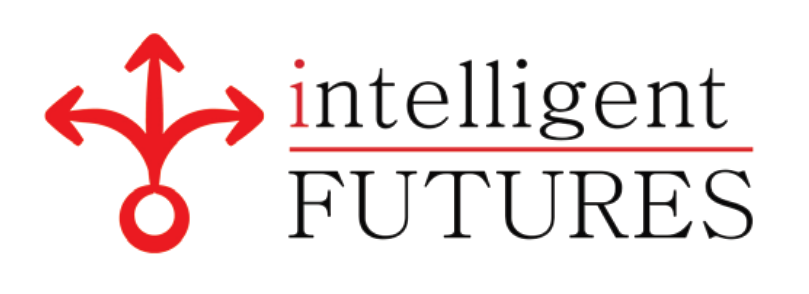- Supply-led innovation – the traditional model – which relies on idea generation to fuel an innovation pipeline; privileges short-term thinking, fuels a bias for often ill-informed action, and iterates on the business of today rather than on the business of tomorrow.
- Corporations – especially incumbents in older industries – cannot incrementally change their way into the future, one good idea at a time. Disruptive change will outpace and dislocate their best efforts.
- Framing a corporate innovation agenda with a demand-led innovation model – an emerging model grounded in strategic risk – offers a more robust path to organic growth, longer-term competitiveness, and resilience.
The innovation literature is replete with various approaches, frameworks and strategies for organising corporate innovation. I prefer the broader term ‘framing’ by which I mean the design, management and execution of the corporate innovation agenda. In this article – which is drawn from my address to the recent SYNxSYDNEY community gathering – I focus on three points: the importance of framing innovation; the distinction between ‘supply-led’ innovation and ‘demand-led’ innovation; and the structural elements needed to frame corporate innovation.
Corporate innovation agendas are pulled in many directions, with each direction capable of generating discrete programs of work. For example, the agenda might be ‘directed’ in a top-down sense with strong alignment to a mission. Alternatively, the agenda may be ‘undirected’, seeking to respond and adapt from bottom-up perspectives. The agenda may be drawn for the certainty of the present, exploiting opportunities for incremental enhancement. Finally, the agenda may seek to be more anticipatory, embracing uncertainty to explore transformation.
These competing tensions need to be corralled, to remove wasteful innovation theatre and ad hoc decision making in the corporate innovation agenda. Without meaningful resolution, these competing tensions are invariably resolved by business as usual (BAU) imperatives, which favour product and process innovation for the business of today. I call this process of corralling competing tensions ‘framing’ corporate innovation. Framing ensures innovation initiatives remain aligned with strategic business objectives in time, and over time.
Our ability to resolve competing tensions in the corporate innovation agenda is influenced by the innovation model we embrace. Supply-led innovation – the traditional model – relies on idea generation to fuel an innovation pipeline. In practice this model tends to privilege short-term thinking, incrementalism, fuels a bias for often ill-informed action, and iterates on the business of today rather than the business of tomorrow. Clearly ideas are necessary but not sufficient to frame corporate innovation because in the face of growing disruption, corporations cannot incrementally change their way into the future, one good idea at a time.
Demand-led innovation – an emerging model – relies on the pull of the future to fuel an innovation agenda by identifying the ‘incoherencies’ that arise as we try to push the business of today into the operating environment of tomorrow. These incoherencies are sources of disruption that act like canaries in the mind-shaft, signalling where attention is needed to renew our business model – thereby connecting today’s decision making with the business of tomorrow. Demand-led innovation relies on three structural elements to frame the corporate innovation agenda; strategic risk, innovation portfolio, and innovation pathways. We’ll now look at each of these elements in turn.
The incoherencies identified in the demand-led innovation model tend to cluster into strategic risks, which are distinctive for each corporation. For example, a large financial services company reliant upon revenue from car insurance might cluster incoherencies such as declining car ownership, increasing use of shared mobility services and car subscriptions, as well as the emergence of safer autonomous vehicle technology into a strategic risk called ‘Mobility’.
Strategic risks are much more significant than operational risks because they represent a fundamental mismatch between what we do, the customer and community need for it, and the circumstances in which that offer can be meaningfully delivered. However, these sources of disruption giving rise to strategic risk can also be the seeds of our reinvention if we can effectively learn about them and harness them.
The next framing element in the demand-led model is the innovation portfolio. The innovation portfolio is a vehicle to focus and accelerate our learning about relevant structural changes in the external environment that give rise to strategic risk. The innovation portfolio comprises a diverse range of strategic options balanced across the landscape of strategic risk we are confronting. Importantly, the innovation portfolio is not a suite of start-ups hoping that something pays off. The strategic options range from experimental products and services to participating in research cooperatives, and collectively, represent a strategic asset for the corporation.
The innovation portfolio buys us ‘decision space’ by offering early warning through key insights about the nature and dynamics of structural change, the materiality of strategic risk, emerging value pools, and the design of business models able to service these emerging value pools. For example, to extend our discussion of the strategic risk of mobility; the emergence of autonomous vehicle technologies can now be more accurately time-boxed, mobility as a service is an emerging value pool offering multiple choices, and a capability to exploit telematics data will be central to new business models in the mobility as a service space. By equipping our strategic leaders with insights drawn from the experience of a portfolio of strategic options we heighten the corporation’s readiness to become something different for our customers and our stakeholders when we need to.
The final framing element of demand-led innovation is the innovation pathway. Innovation pathways bring tomorrow into today, seeking to operationalise portfolio insights by offering near-term benefits such as cleansing and sweating BAU assets or creating extensions and adjacencies, while equipping the corporation to become the business of tomorrow. In practice, the mesh of innovation pathways synchronises and integrates each small but deliberate investment in the future to make the corporate innovation agenda a coherent program of activities. Pathways embrace what Peter Drucker called the ‘futurity’ of present decisions. Drucker said, ‘The question that faces the strategic decision maker is not what the organization should do tomorrow. It is, what do we have to do today to be ready for an uncertain tomorrow?’
Frequently, we find that corporations advance their long-term goals by focusing only on their near-term needs, while assuming a progression of good, short-term choices provides an adequate path toward a desirable long-term future. But, as complexity intervenes, even today’s choices with relatively similar near-term implications can lead to unavoidable and significantly different long-term paths. The ability to identify where a long-term view may prove most important as well as the ability to integrate such a view meaningfully into today’s decisions is critical in shaping our prospects in the face of disruptive change.
In summary, while strategic risks point towards the ‘ends’ we should be seeking in business model renewal, and the innovation portfolio illuminates the ‘ways’ to achieve those ends, the innovation pathways focus on the ‘means’ – especially design, rapid experimentation, and business model development. Framing is thus a sophisticated exercise in aligning ends, ways and means across the corporate innovation agenda for creating the conditions to ensure the business of tomorrow is successful in producing real and sustained growth. If you are looking for a deeper examination of demand-led innovation concepts, please see a podcast I recorded recently for the University of Sydney Business School’s ‘Innovation Leaders’ series.

